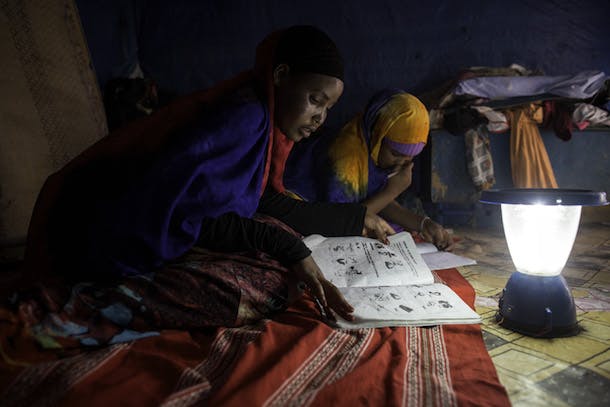
Editor’s Note: This post is part of the blog series, “Her Goals: Our Future,” which highlights the connections between girls and women and the Sustainable Development Goals.
Do you know why girls and women are especially affected by a lack of access to energy? And why they are also uniquely helped by solutions targeted to and delivered by them?
Test your girls, women, and energy knowledge below.
Here are five key challenges girls and women face:
1. Inadequate, dangerous, and unhealthy energy sources prematurely kill many women and children.
2. Without power in health clinics, women often have to take a candle to the facility to give birth. Some 800 women die every day during pregnancy and childbirth, almost all in developing countries with poor health infrastructure.
3. In refugee camps and temporary settlements across the world, gender-based violence often happens at night: Refugee girls and women around the world need the security and protection afforded by light.
4. Women – and often girls – in rural areas spend 2-8 hours daily gathering fuel for lighting and cooking over inefficient stoves.
5. Energy poverty is expensive. Women struggling to feed their families pay more as a percentage of their household income for low-quality energy: Globally, some $37 billion is spent annually on kerosene for lighting and cooking.
And here are five facts to share about the opportunities for girls and women provided by better access to energy:
1. Girls with electricity at home are able to study at night and get a better education.
2. Agricultural processing solutions like solar-powered rice mills reduce women farmers’ time burden and add value to their crops.
3. A woman giving birth in an electrified health clinic is less likely to die in childbirth.
4. A health clinic lit with light bulbs, not candles, in the delivery room ensures a baby girl’s first breath is of fresh air, not fumes.
5. Women make great clean energy entrepreneurs. Companies with women in leadership do better.
Goal 7 of the Sustainable Development Goals focuses on achieving universal energy access by 2030. Join the UN Foundation in making it happen and powering our way to a better future for girls and women. Support entrepreneurs delivering clean energy solutions by and for girls and women at www.energyaccess.org. And learn more by following @energyaccessPN on Twitter.
Photo credit: Girl Up



 View All Blog Posts
View All Blog Posts